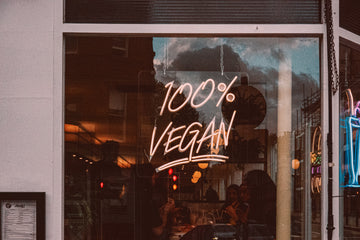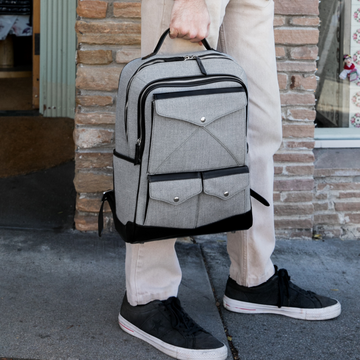The fashion industry is becoming aware and more interested in sustainable fabrics, and many eco-friendly alternatives have appeared. Fashion designers and buyers are now educated about the environmental impact of standard fabrics like polyester. And now, they are shifting to vegan options like jute, bamboo, organic cotton, and hemp fabric. In this blog, we will specifically discuss everything about hemp fabric and see how sustainable it is.
The versatility of hemp fabric makes it an ideal material. Due to this, it is used in the production of paper, canvas, clothing, ropes, etc.
These days more sustainable brands are using hemp material to make clothes and accessories. You can find everything made out of hemp fabric.
Hemp is a natural plant fiber derived from the stems of the cannabis plant. Concerning sustainability, hemp is known to be the least harmful to the planet. The hemp crop needs little water to grow and restore soil nutrients to help improve soil health. Moreover, it is biodegradable and one of the more robust textile fabrics. It also offers insulating, anti-radiation, and anti-bacterial properties. If you are a sustainable shopper, keep reading to know more about this excellent fabric.
What Is Hemp Fabric?
Linen, jute, bamboo, and flax are derived from the stem of their plants. Hemp is harvested from the Cannabis Sativa plant, which produces marijuana and its variations. However, THC is the primary ingredient in marijuana for recreational or medicinal use and has a "high" effect. While hemp comes from a similar plant but its processing is entirely different as it ensures that the potency level of the THC remains below 0.3 percent. This means hemp will not make anyone high who will try it.
Industrial hemp has been cultivated for years and is known worldwide, especially during the 16th and 18th centuries, when hemp and flax dominated fiber crops in Asia, Europe, and North America.
The Process of Making Hemp:
The manufacturing of hemp is known to be labor intensive because it demands a great deal of manual and physical work. If you wonder how hemp fabric is made, then read the below process that explains how this sustainable fiber goes through the following procedure to become the fabric-
- Planting-
Farmers harvest it during the early to mid-flowering stage. They use a particular machine to harvest most plants they grow to produce this sustainable fabric. Some farmers field to aim for higher yields, while others plant at most 180,000 per acre for better quality fabric.
- Retting-
After harvesting, steams are placed on the ground for many weeks to allow for retting. This is a decay method that binds the hemp fiber and decomposes it. The process separates the thread from the bark.
- Decortication-
Under this process, the branches' central woody core from the stems is removed when the components are wet from retting or after drying.
- Lignin removal-
Lignin is an organic material that makes plants wooded. In addition, it is responsible for the harsh texture of traditional hemp fiber. To make this fiber softer and skin-friendly, the lignin is removed.
- Spinning-
Hemp fibers spin and twist together to create long threads knitted into textiles. These threads are the same as linen in texture, but they can be mixed with other natural fibers to develop fabrics with the endurance of hemp and the softness of cotton.
What Does Hemp Fabric Feel Like?
When processed, hemp feels similar to cotton, but the finish is rough, just like the canvas. However, it is lighter and also dries easily and quickly. Now, if you wonder, does hemp shrink? Then the answer is that in high heat, the hemp fabric can shrink very quickly. This sustainable fabric is resistant to pilling or forming small fluff balls on the surface. It is also durable, with some studies suggesting that hemp material is three times stronger than cotton fabric. T-shirts made of cotton usually last ten years, but those made from hemp can survive up to three times longer.
Moreover, hemp is a lightweight fabric; it is breathable and allows the flow of moisture from the skin to the atmosphere, keeping the person cool in a tropical climate or warm weather. It is also highly resistant to mold, mildew, and potentially harmful microbes.
What are the advantages and drawbacks of hemp fabric?
Fabric made out of hemp material is considered the most eco-friendly fabric available because of its eco-friendly and sustainable nature. Let's learn about some benefits of hemp clothing.
1. Durable-
Hemp fabric can last longer without degrading. It also becomes softer with each wash without losing its durability.
2. Biodegradable-
If you need clarification, is hemp biodegradable? Then let us tell you that Organic hemp fiber is completely biodegradable and can be composted.
3. Block UV rays-
Based on fabric testing, the UV-blocking effect of hemp fabric was 50 percent higher than that of polyester.
4. Hypoallergenic-
Hemp fabric is suitable for people with sensitive skin.
Although hemp fabric has a minimal impact on the environment with its growing and cultivation and can be beneficial, there are certain disadvantages to using hemp fabric.

5. Requirement of bleach-
Pure hemp fabric has a different odor and does not have the same natural whiteness as cotton, which means more bleach is required to make it usable.
6. Constrained supply-
There are less than 1 million acres of hemp under crop globally versus 33 million acres of cotton.
7. Combined with synthetic fabrics-
As hemp is generally viewed as a rough fabric, it is usually combined with other fibers, which reduces the product's biodegradability.
What Is The Sustainability Of The Hemp Fabric?
Mentioned below are some factors that can prove how sustainable the hemp fabric is.
- Less water-
The hemp crop requires less water, and no extra irrigation is usually needed. Water usage for paddock-retted hemp can be up to 4 times less than cotton.
- Zero chemicals-
This industrial plant is naturally disease resistant and can be grown without pesticides, herbicides, and other chemicals.
- Zero wastage-
Hemp can be considered a zero-waste plant because humans can use its every single part, including the seeds. These are a superfood and a derivative of hemp oil used as lamp light and biodiesel.
- Carbon positive-
Hemp can trap significantly more carbon than forests and convert that to usable biomass.
- Soil health-
Its root system reduces soil erosion and positively affects the soil by restoring vital nutrients. In some areas, hemp is being grown on land to remove pollutants like zinc and mercury.
Final Thoughts:
After reading the above blog, you might have concluded that hemp is an eco-friendly and sustainable material. Humans can use every single part of the plant as it offers many benefits to living beings and the planet. However, with the growing awareness about plant-based products, hemp has been the best choice for making clothes and other accessories.
Also Read some interesting information about Sustainable bags and backpacks The Luna Story So Far







